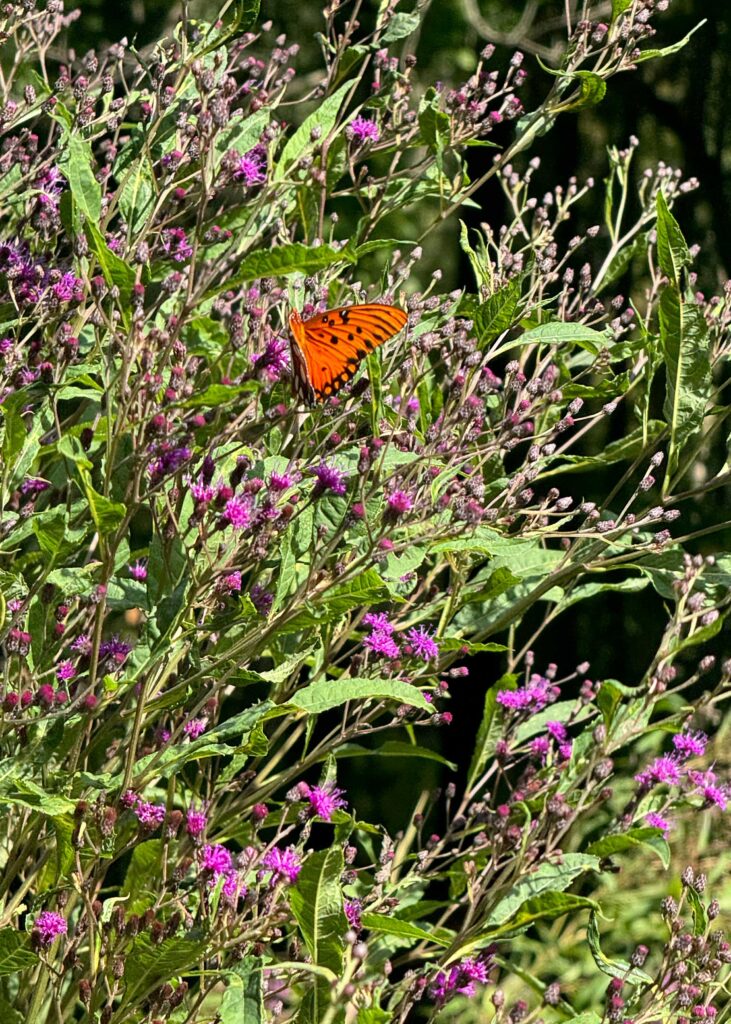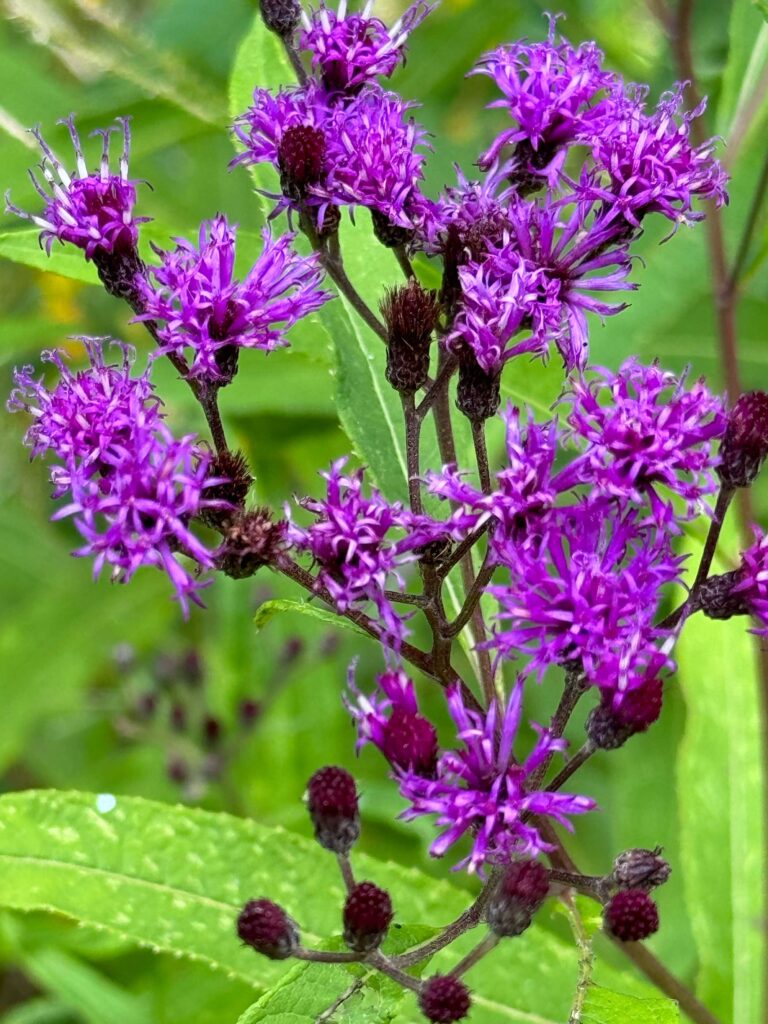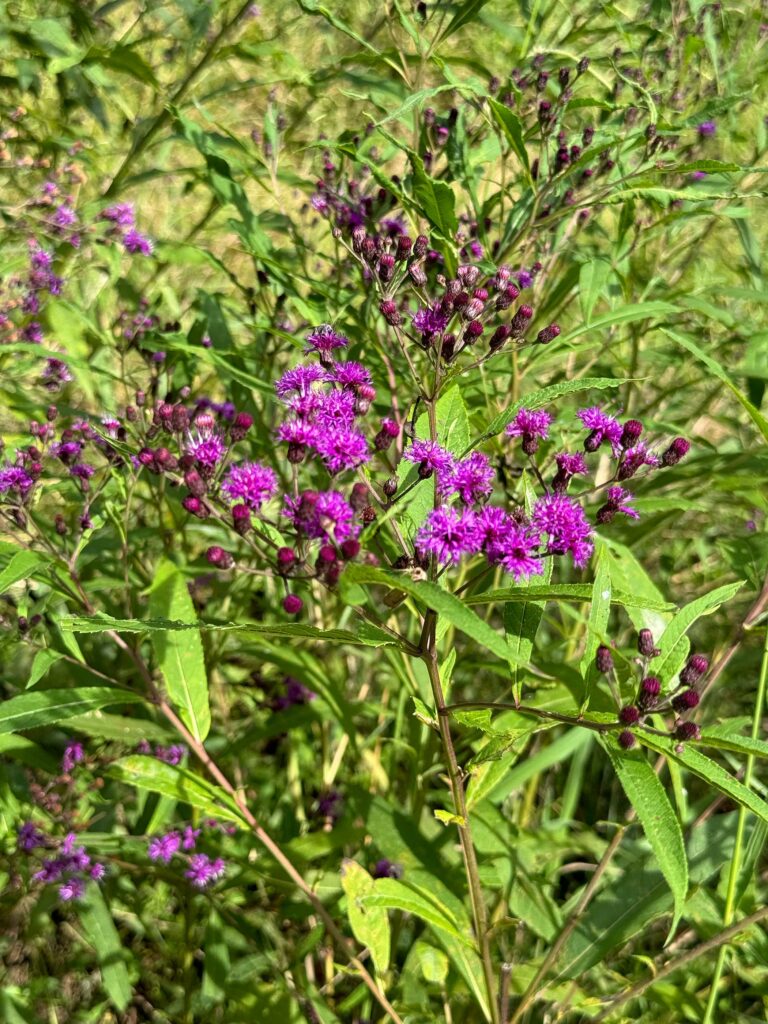Native Ironweed Feeds Butterflies in Late Summer
In the mid to late summer, the deep purple flowers of ironweed start showing up. They stand out in the landscape, not just for the bright color but also because they are so tall. What caught my eye were the many butterflies that land on the flowers to feed. American ladies, monarchs, sulfur butterflies, gulf fritillaries, eastern tiger swallowtails, and skippers all flock to ironweed flowers. It’s an amazing sight!


Ironweed (Vernonia spp.)
There are 17 different species of ironweed in the U.S Four of these are native to Georgia. They include narrow-leaf ironweed (Vernonia angustifolia), stemless ironweed (Vernonia acaulis), tall ironweed (Vernonia gigantea), and Georgia ironweed (Vernonia pulchella).
Plant Height and Growth
This herbaceous plant is a perennial, meaning it grows back yearly. Many Vernonia species grow tall; some, like giant ironweed, grow as tall as 10 feet. Narrowleaf ironweed is one of the shorter species, growing 2 to 4 feet tall. New cultivars, which are shorter and bushier, are perfect for gardens.
The roots of this plant are short rhizomes with lots of roots that look like small ropes extending from the stem. New plants may grow at the end of the rhizomes as the plant ages. As a result, it grows in clumps.
Plant Appearance
Vernonia spp. leaves are long and lance-like (lanceolate). Some species have a serrated margin, while others have a smooth margin. Each stem holds multiple blooms, sometimes up to 30 small flowers.


How to Grow Ironweed in your Garden
Ironweed is a low-maintenance plant. Once established, it requires little care.
Where to Plant Ironweed
Plant this wildflower in just about any soil, some species can even handle clay. It prefers moist soils and is usually found growing along streams, in fields, and open woodlands. It will grow best in full sun to a little shade.
Plant this native plant in the back of your garden so that it won’t hide other plants (it’s really tall). If you want the plants to be more compact, trim back the stems in spring.
The purple flowers pair really well with yellow blooms, so consider adding it in with narrowleaf sunflower or goldenrod.
How to Propagate Ironweed
This plant readily self-seeds, so if you don’t want it to spread, remove the spent flowers before they turn into seeds. While it isn’t invasive, it can spread through seeds.
The easiest way to create more of these plants is to divide the roots and transplant the cuttings. You can also take cuttings to root in the spring.
Wildlife Value
Ironweed is a critical late-season source of nectar for many insects, including bees, butterflies, and other insects. The Xerces Society for Invertebrate Conservation categorizes several ironweed species as of special value to native bees. Birds feed on the seeds. The leaves have a bitter taste, making this plant deer-resistant and rabbit-resistant.
